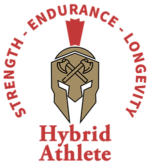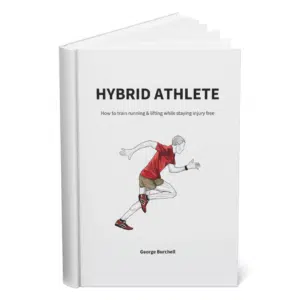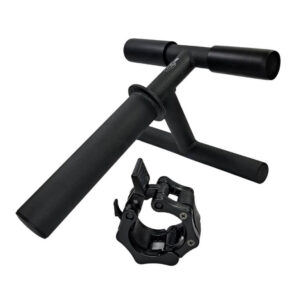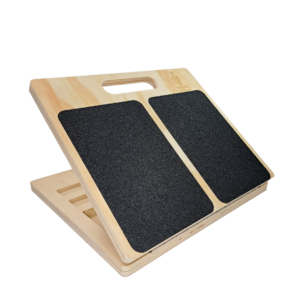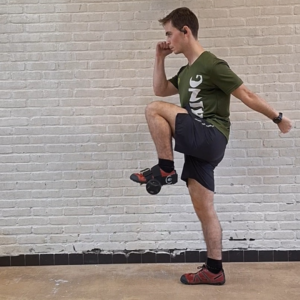
If you’ve ever walked the road of knee bulletproofing, you must have stumbled upon the topic of VMO muscle, aka vastus medialis oblique. And, thanks to how important it is, you’ll probably hear more and more about it.
The VMO plays several important roles in the lower body, besides being mostly known as crucial for knee health.
Since we take injury prevention seriously at Hybrid Athlete, let’s talk about the VMO, its importance, and above all – how to train it.
Table of Contents
What is the VMO?
The vastus medialis oblique (VMO) is a tear-drop-shaped part of the vastus medialis, one of four muscles that make up the quadriceps. Its origin is connected with the adductor magnus tendon, while it inserts onto the patella and the knee joint capsule.
The main function of the VMO is to stabilize the patella through leg extension. In other words, whenever you are extending your leg, the vastus medialis oblique is there to control and stabilize the movement.
Additionally, together with vastus lateralis, the VMO helps with aligning the patella during both flexion and extension.
What are the symptoms of a weak VMO?
A weak or neglected VMO can cause a lot of trouble in the kinetic chain created by the ankle, knee, and hip.
Here are some common symptoms of a weak VMO:
- Knee pain, especially after sitting for a long time, or after sudden movements
- Muscle imbalances that affect the position of the foot (pronation) or the hips (tight hip flexors)
- Troubles with squatting and getting up – due to imbalances, the squatting form suffers the most
How to train your VMO (with exercise progressions)
Even though the VMO plays a key part in leg extension and stability, doing leg extensions is not the only (or the best) way to train it.
To strengthen your VMO you should be doing:
- Step-ups and reverse step-ups (with and without a slant)
- Split squats and lunge movements
- Single leg squats
1. Step-ups and reverse step-ups
The step-ups have been proven over and over again as an instrumental knee-building (and rebuilding) tool. The most stap-up trio is the famous Patrick > Poliquin > Petersen step-up progression.
This exercise allows you to strengthen the VMO in its range of motion. On top of that the step-ups are not taxing on your body, so you can up the frequency to three or more times per week.
For the full trio to take effect, you should consider getting a slant board, as it allows you to push your VMO and ankles even further.
Follow these links to read the guides to the most popular step-up exercises out there:
2. Split squats
Next up are split squats, and by extension (pun intended), lunge movements. These movements allow you to train the VMO to produce force to get up and stabilize the knee throughout the whole movement.
Here are some split squat variations (from easiest to most challenging):
- Bodyweight lunges – push your knees over the toes when you get down
- Bulgarian split squats – the “burn” you feel in your lower quad is in the VMO
- ATG split squats – the knees-over-toes holly grail, most challenging with a barbell
3. Single leg squats
Lastly, once your VMO starts developing, you’ll need to start upping the challenge. Single-leg squats are notorious for being hard, not due to the force, but rather the balance needed to execute them correctly.
The pinnacle of (unilateral) single-leg squatting is the famous pistol squat, but you don’t have to start there. Go with step-ups and split squats, then maybe try an assisted pistol or Hawaiian squat.
A big upside of unilateral squatting is less overall pressure on the lower back. Doing a clean pistol squat is not for bragging rights only, it really is a great VMO exercise.
Don’t neglect your VMO if you want healthy and bulletproof knees
As you can see, there’s more than just one way to tackle the VMO. All these variations and training methods just speak volumes about the importance of this muscle and its knee-stabilization role.
So make sure to incorporate some of these into your leg days. Start slow, especially if you’re experiencing knee pain. Rome wasn’t built in a day, and nor will your VMO be.
With some dedication and a no-rush mindset, you’ll have bulletproof knees in no time.
Get the best Knees Over Toes bulletproofing gear at our shop:
GET THE BEST INJURY-PREVENTION TRAINING EQUIPMENT:
Above all, a storyteller. Then comes marketing, branding, writing music, powerlifting, and woodworking.
